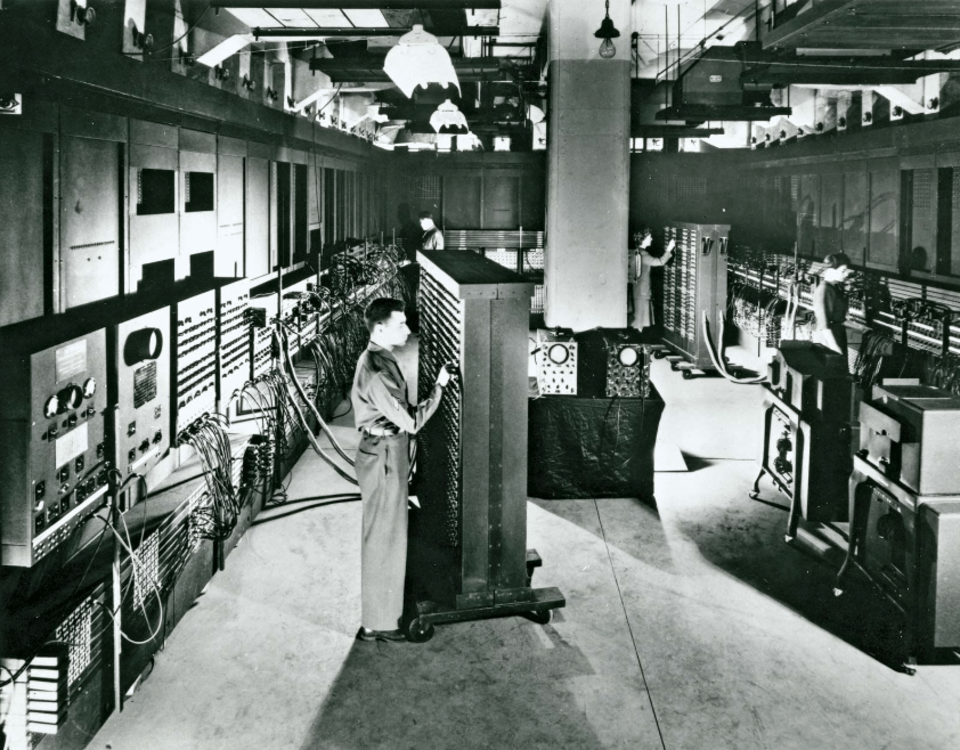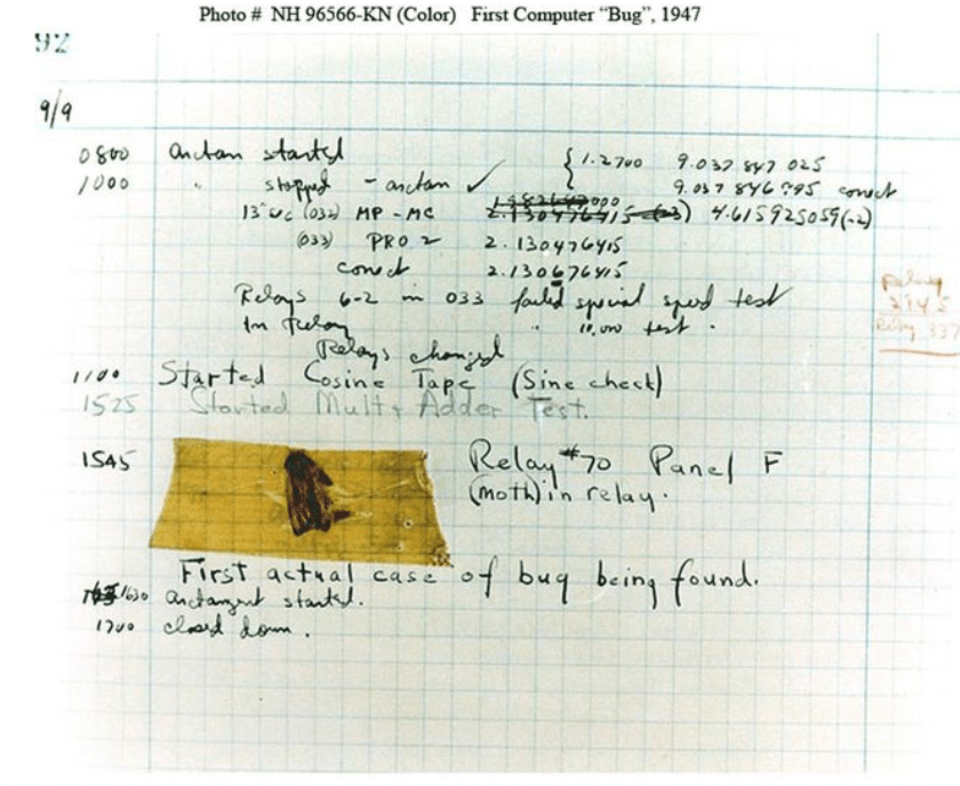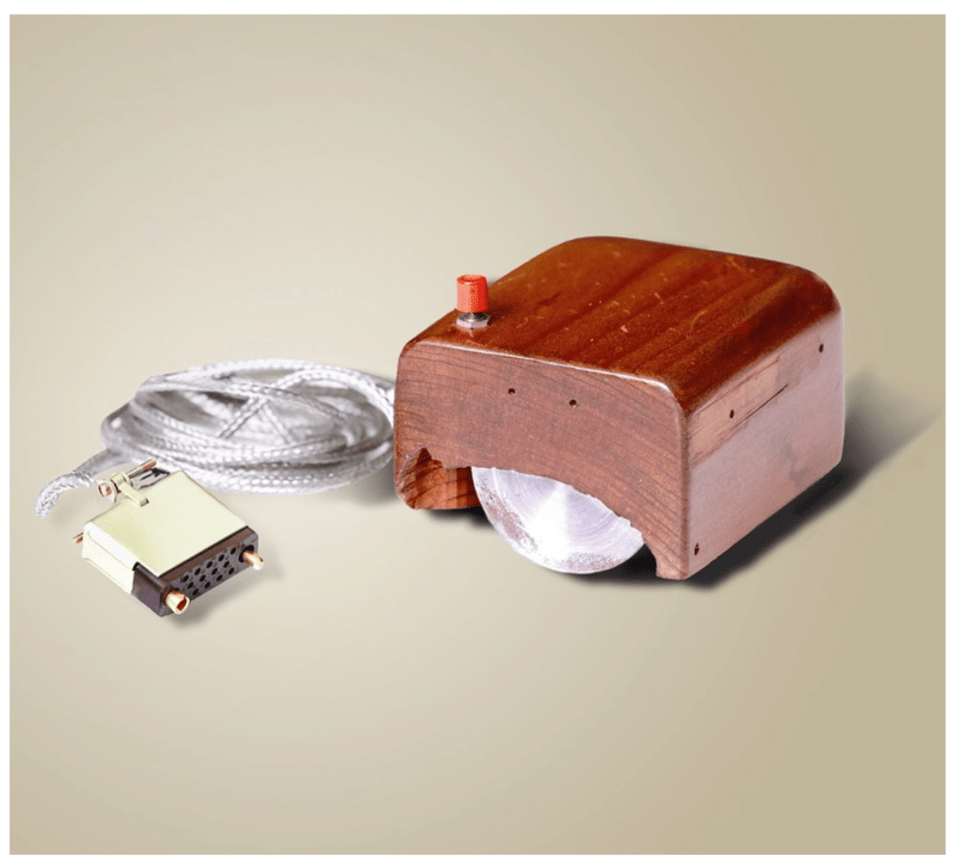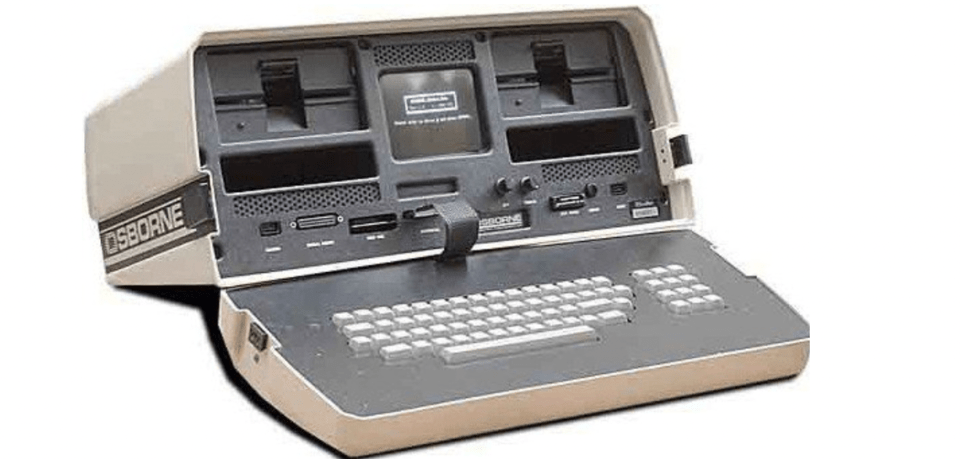Imagine if your laptop weighed 24 pounds but only had a 5 inch screen. Back in 1981, this “laptop” was considered high tech! Today, such a laptop would be a joke.
The history of computers is weird and interesting. Even though most of the technology we will discuss is super old and not used anymore, the concepts used back then are still used today. To be clear, this article is mainly concerned with the history of computer hardware (no software, internet, mobile devices, video games, or robotics). Why are code mistakes called bugs? How powerful was the computer that landed man on the moon? Continue reading to find out!
Enroll your child in free award-winning coding classes led live by expert instructors, and designed by professionals from Google, Stanford, and MIT.
Discover the History of Computer Hardware for Kids
Early computers (pre 1900s)
- The abacus was the very first device used to help compute numbers, so it’s technically a computer! An abacus is a device with multiple parallel strings with each string having several beads. Archaeologists have found abaci (plural for abacus) everywhere from Egypt, the Middle East, India, and China. The earliest date back to 1100 BCE according to Encyclopedia Britanica.
- Between 1820-1833, British mathematician Charles Babbage spent time designing proposals for a mechanical computer to be used to help the British government with navigation calculations. Babbage came up with a machine called the Analytical Engine. The Analytical Engine could store one thousand 50 digit numbers, can evaluate conditional statements, and take in custom inputs that affected the output. Although it never got built during his time, the ideas behind Babbage’s Analytical Engine can still be seen in today’s computers.
- While the Analytical Engine was simply an idea, in 1843 French mathematician Ada Lovelace published some algorithms the Analytical Engine could use to compute the Bernoulli numbers, a number sequence that appears often in calculus. She is often considered history’s first computer programmer!
The first supercomputers

- Due to World War II, the US government funded many initiatives to develop electronic computers to perform military related calculations. Completed in 1946, scientists at the University of Pennsylvania built the ENIAC (Electronic Numerical Integrator and Computer), considered the first supercomputer. It used punch cards as input and output.
- At the time the ENIAC was revolutionary - calculations that took 12 hours by hand took 30 seconds on ENIAC. The ENIAC can perform 5,000 calculations per second but took up 1500 square feet of space and weighed 30 tons. To put that in perspective the iPhone 6 from 2014 can perform 25 billion calculations per second but weighs 4.55 ounces. The computer was so large and inefficient because the ENIAC used large and unreliable vacuum tubes to control circuit flow.
- In 1947, a different supercomputer at Harvard University called Mark II all of a sudden delivered incorrect calculations. It turns out that the reason for the wrong results was due to a bug, a real moth stuck in a circuit! Grace Hopper, a mathematician and technician for the computer, taped the moth into a notebook and thus the world’s first computer bug was born. Grace Hopper is also well known for developing the first English text based programming language, COBOL.

The first computer chips
- In 1958 Jack Kilby and Robert Noyce invented the integrated circuit. What used to take a room of vacuum tubes can now be downsized into a small piece of silicon containing thousands of microscopic switches. The silicon contains microscopic layers of different metals, these layers would form paths around the silicon similar to wires in larger computers. With the silicon chip, computers became a lot faster and cheaper.
- In 1969 NASA sent astronauts to the moon on Apollo 11. The computer on the command module used silicon computer chips. While the Apollo 11 computer brought man on the moon the computer is weak compared to today’s devices. For example, a handheld TI-84 graphing calculator is 350 times faster and has 32 times more RAM memory than the Apollo 11 computer. A 2014 iPhone 6 is 32,600 times faster than the Apollo 11 computer and could perform 120 million times more calculations per second!
The rise of personal computers - rapid fire facts
Now we are getting to some technology and names that will be more familiar. Most of this information was sourced from here.
The first computer mouse was invented in 1968. It consisted of a wood block with two buttons and a wheel underneath, even though point and click computers with graphical user interfaces (GUIs) did not exist yet. The box with the wire behind it reminded people of mice.
In 1971, IBM developed the floppy disk (the save icon image). Floppy disks made it easy to transfer data between computers.

- In 1973, Xerox introduced ethernet (wired internet). Ethernet enabled computers to connect to each other.
- In 1975, Bill Gates and Paul Allen started Microsoft. They wrote code for the Altair 8080, a popular home kit built computer.
- In 1976, Steve Jobs and Steve Wozniak started Apple and produce the Apple I. The Apple I is considered the first computer with a single circuit board.In 1981, the first laptop was invented, the Osborne 1. It weighed 24 pounds but only had a 5 inch screen!
- In 1983, Apple’s Lisa computer became the first computer to have a GUI, dropdown menus, and icons for programs. Before Apple’s Lisa, using a computer required knowing how to type commands.
- In 1997, IBM’s Deep Blue supercomputer defeated the world’s top ranked chess player. Deep Blue could calculate 200 million potential chess moves per second.
- In 1999, Wi-Fi was invented. Before this all computers connected to the internet had to use a wired Ethernet connection.
- In 2000, USB and USB flash drives were introduced. USB drives were smaller and can hold more data than floppy disks.In 2005, the first Arduino kits were introduced. People can build simple programmable devices using Arduino kits. (Learn more about Arduinos with Create & Learn’s class!)

Learn the History of Computers for Kids
If computers have improved so much these past few decades, imagine what the future holds! After learning about the history of computers, it’s now time for your child to make their mark. They can become the next Ada Lovelace or Steve Jobs! They can invent the next great revolution in computers. Get started with live online classes from Create & Learn, which was voted by parents as the Most Loved Virtual STEM Program. Enroll in a popular beginner coding free Scratch class, or learn how to create with circuits and Arduino, the foundation of robotics and smart devices in a live online Smart Devices class. Students even earn a certificate upon class completion!
Or explore more kid-friendly computer programming courses.
Written by Brandon Lim, a Create & Learn instructor and curriculum developer. Brandon also works full-time as a software engineer and holds a BS in Computer Science from Johns Hopkins University. Brandon has experience teaching coding to students of all ages from elementary school to college and is excited to share his deep knowledge and relentless passion for coding with the next generation of technology leaders.




